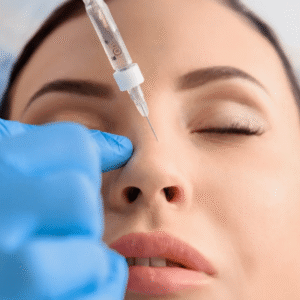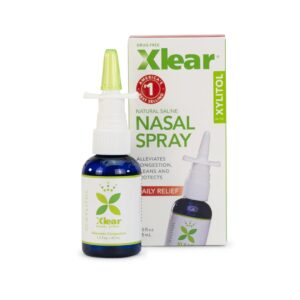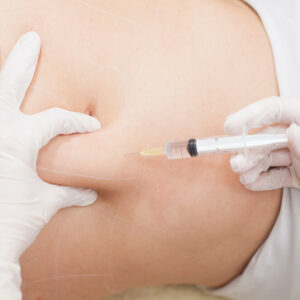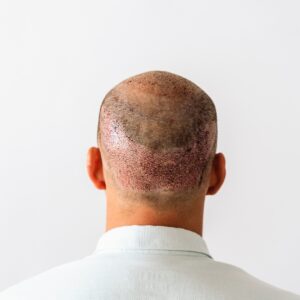Introduction: When Spring Feels Like a Battlefield
For most, spring is a breath of fresh air lush greenery, blooming flowers, longer days. But for millions of people dealing with hayfever, it’s a season filled with relentless sneezing, itchy eyes, and sheer frustration. Allergic rhinitis, commonly known as hayfever, is far from just a minor annoyance. It can seriously disrupt sleep, concentration, and quality of life.
You may have tried everything—tablets, nasal sprays, herbal teas—but still find yourself defeated by pollen every year. If that sounds familiar, it might be time to consider hayfever injections. This blog dives deep into what they are, how they work, and why they’re offering hope to long-time sufferers.
Understanding the Hayfever Struggle
Hayfever isn’t just “a little sneezing.” It’s a chronic allergic reaction triggered by pollen, dust mites, or other airborne allergens. For some, it’s seasonal. For others, it can stretch across months, especially in areas with a long pollen season.
The symptoms often go beyond nose and eyes—they include fatigue, headaches, poor sleep, and even low mood. When you add all that up, the impact is far more serious than many realise. This is why people are increasingly turning to more lasting solutions like hayfever injections.
What Are Hayfever Injections?
Hayfever injections are corticosteroid-based treatments administered via intramuscular injection. These steroids help reduce inflammation throughout the body, which in turn controls the symptoms triggered by allergens.
Unlike tablets or sprays that need to be taken daily, one injection can sometimes provide relief for several weeks—or even the entire allergy season. That’s the key reason why they’re gaining popularity, particularly for those who don’t respond well to conventional remedies.
How Do Hayfever Injections Work?
Let’s break it down. When your body encounters an allergen like pollen, it sees it as a threat and releases histamines—chemicals that lead to itching, swelling, and congestion. Corticosteroids, like those found in hayfever injections, interrupt this immune overreaction.
They reduce inflammation and histamine release, helping to calm your system down before symptoms spiral out of control. And because the injection works systemically, it targets all your allergy symptoms—eyes, nose, throat, and lungs—rather than just masking them individually.
Who Should Consider Hayfever Injections?
Hayfever injections aren’t for everyone—but they’re an excellent option for those with moderate to severe hayfever who find that tablets and sprays just don’t do enough. They’re also ideal for people who experience side effects from antihistamines, such as drowsiness or dryness.
If you have an important season coming up—a wedding, exams, a holiday—or just want to enjoy the outdoors without constantly wiping your eyes, hayfever injections could be worth exploring. However, they are prescription-only, so a consultation with a GP is essential.
The Experience—What Getting the Injection Feels Like
Getting a hayfever injection is quick and simple. A medical professional will usually administer the shot into the upper arm or buttock. The entire process takes under five minutes, and most people report little to no pain—just a pinch.
Results can be noticeable within a few days. For many, it feels like flipping a switch: one moment you’re sniffling through life, the next you’re breathing easily and sleeping soundly. Some may need a follow-up shot later in the season, but often one dose does the trick.
Weighing the Benefits and Risks
Like any medical treatment, hayfever injections come with both upsides and considerations. On the positive side, they provide long-lasting relief, reduce dependency on daily meds, and improve quality of life.
On the cautionary side, repeated use of steroid injections over time can lead to potential side effects like weight gain, mood changes, or weakened immunity. That’s why these injections are typically recommended only for those who have not responded to other treatments and are used sparingly—usually once per season.
Hayfever Injections vs. Other Allergy Treatments
Compared to over-the-counter medications, hayfever injections offer a more holistic approach. Antihistamines work well but can wear off quickly or cause drowsiness. Nasal sprays may relieve congestion but don’t always address eye symptoms. Immunotherapy (like allergy shots or tablets) is effective too, but requires a long-term commitment.
Hayfever injections strike a balance—they provide fast, broad-spectrum relief for a full season, without the need for daily maintenance. For those overwhelmed by their allergy routine, it’s a breath of fresh air—literally and figuratively.
How to Decide If It’s Right for You
If your hayfever is disrupting your daily life, affecting your sleep, or limiting your outdoor activities, it’s time to speak with a healthcare provider. Bring a list of treatments you’ve already tried, and discuss how allergies are impacting your wellbeing.
Your GP will evaluate your medical history, the severity of your symptoms, and determine whether hayfever injections are the best course of action. For many, it’s a huge step toward reclaiming the joys of spring and summer without the sneezing soundtrack.
Conclusion: It’s Time to Enjoy the Outdoors Again
You shouldn’t have to miss out on sunshine, fresh air, or garden walks just because of hayfever. While there’s no permanent cure, hayfever injections provide a powerful, effective way to get your symptoms under control—especially when other treatments fall short.
Don’t let allergies own your seasons. With the right information and medical support, you can make a confident decision that lets you embrace the outdoors again—with clear eyes and a smile.









